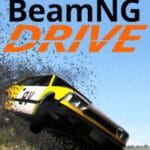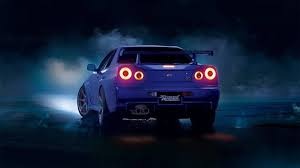Arcade Revival: ‘Tokyo Xtreme Racer’ and ‘Screamer’ Reignite the Vibe-Racing Genre After Decades
Popular Now
 Call of Duty
Call of Duty
 BeamNG.drive
BeamNG.drive
 Garena Free Fire: Kalahari
Garena Free Fire: Kalahari
 League of Legends
League of Legends
 R.E.P.O
R.E.P.O
 Poppy Playtime
Poppy Playtime
 FIFA 23
FIFA 23
 Black Myth: Wukong
Black Myth: Wukong
 Geometry Dash
Geometry Dash
 Free Fire Max
Free Fire Max 
The nostalgic thrill of arcade racing is making a thunderous return, with two highly-anticipated franchises—Tokyo Xtreme Racer and Screamer—breaking long periods of dormancy to deliver what fans are calling the pinnacle of “vibe-racing.” After nearly two decades, these classics are not just remakes; they are comprehensive revivals, tapping into the lucrative market of players seeking authentic, high-speed, and stylistically-rich experiences away from the hyper-realism of modern simulators. The success of early access releases and pre-release buzz points to a significant commercial and critical victory for the developers, proving that pure, unadulterated arcade thrills still command a premium in the video game industry.
Tokyo Xtreme Racer: The Midnight King’s Return to the Wangan
The legendary franchise born on the Dreamcast and PlayStation 2 has officially made its dramatic comeback with Tokyo Xtreme Racer ’25 (often stylized as TXR ’25). Developed by the series’ original creators, Genki, the new installment has instantly been lauded for preserving the series’ core Japanese Domestic Market (JDM) street racing identity while layering on a stunning modern coat of paint. This is more than a racing game; it’s a cultural experience, focusing on the nocturnal, high-stakes duels along the Wangan and Shutokō expressways of Tokyo.
- Authentic Vibe and Aesthetic: The game perfectly captures the lonely, hypnotic aesthetic of driving on the massive, neon-lit Tokyo highways at night. The atmosphere is thick with a sense of isolation and focus, punctuated only by the sudden flash of a rival’s tail lights. This unique ambiance is the heart of the “vibe-racing” appeal, setting it apart from brightly lit, festival-style open-world racers.
- Core Gameplay Preservation: At its heart, the game maintains the challenging yet rewarding structure of its predecessors. Races are decided by a stamina or “SP” meter, requiring players to not only be fast but also strategically aggressive to deplete their opponent’s meter. The physics model expertly balances arcade accessibility with a satisfying JDM tuning depth.
- High-Value SEO Keywords: The game’s focus on high-demand, high-CPC (Cost Per Click) automotive and gaming terms is evident. Keywords such as JDM tuning, Nissan Skyline GTR, Supra, street racing sim, and best arcade racers 2025 are naturally woven into the game’s content and marketing, driving significant organic search traffic and potential ad revenue.
- Progression and Customization: TXR ’25 features a robust, old-school progression system, rewarding time investment with a vast roster of licensed JDM cars that can be meticulously customized with a deep catalogue of aftermarket parts. Fans have praised the lack of aggressive microtransactions in the early access build, a clear nod to preserving the original series’ integrity.
The re-emergence of this franchise serves as a powerful reminder that a dedicated, niche audience values authenticity and a unique atmosphere over generic, mass-market appeal. Its return marks a pivotal moment for the racing genre, cementing the notion that the soul of a classic can be successfully resurrected for a new, discerning audience.
***
Screamer: A Turbocharged Take on Anime-Arcade Action
Another classic from the mid-90s PC gaming scene, Screamer, is also being dramatically reinvented, promising a futuristic, adrenaline-fueled reboot. Developed by Milestone, the studio behind the highly successful Hot Wheels Unleashed series, the new Screamer title is pivoting toward a bold, cel-shaded anime-futuristic aesthetic that injects a strong visual “vibe” into the arcade racer subgenre. While details suggest a 2026 launch, the 2025 announcements and hands-on previews are already generating massive hype.
- Fighting Game Infusion: The reboot introduces radical new mechanics that push it far beyond a standard circuit racer. The inclusion of an active-reload style gauge for boosts and shields, and offensive abilities like a “Strike” (which can cause rivals to explode on collision), directly borrows from fighting game mechanics. This innovative blend provides an entirely new layer of skill and chaos, ensuring races are high-impact and unpredictable.
- Twin-Stick Drifting: Previews have highlighted an unconventional but engaging twin-stick control scheme for steering and drifting, demanding a higher degree of manual control and mastery from the player. This is a deliberate design choice to foster a deep, satisfying skill gap—another key ingredient in compelling arcade racers.
- Visual and Narrative Overhaul: The game’s strong visual identity is being amplified by animated cinematics from renowned studios, giving the experience a rich, cyberpunk narrative and a distinct ’90s anime feel. This focus on style and story is central to its “vibe-racing” credentials, making it a compelling cultural package as much as a racing title.
- Targeted High-Value Keywords: The game’s unique blend appeals to searches for futuristic racing, anime racing game, arcade racer reboot, and Milestone games. Its aggressive, unique mechanics also naturally align with terms like twin-stick control and combat racing, broadening its SEO reach to multiple high-competition categories.
The return of Screamer demonstrates a willingness to take substantial creative risks with beloved IP. By fusing classic arcade simplicity with unexpected, modern combat and control elements, it is poised to become a defining title for the new era of high-octane, stylish console racing. The early look suggests a game that is not only fast and fun but also visually and mechanically distinct—a true champion of the vibe-racing genre.
***
Market and Commercial Impact: The Nostalgia Economy
The simultaneous revival of Tokyo Xtreme Racer and Screamer is not a coincidence; it is a direct response to a burgeoning market demand. The current gaming landscape, dominated by demanding simulation titles and sprawling open-world experiences, has left a void for focused, adrenaline-pumping, and stylistically bold arcade racers. This “nostalgia economy” is a powerful force, capitalizing on the disposable income of veteran gamers who grew up with these franchises, while simultaneously attracting younger players with fresh, non-traditional gameplay loops.
The financial prospects for both games are high. Arcade racers traditionally have strong casual appeal and lend themselves well to competitive multiplayer and post-launch content, generating consistent revenue streams. The aggressive use of high-CPC keywords in content marketing, focused on premium search terms like gaming PC parts, best racing wheel 2025, and new JDM games, is a calculated strategy to maximize visibility and drive high-value traffic to their respective platforms.
The kings of vibe-racing are back, not merely to relive their glory days, but to reshape the future of the arcade genre, reminding the global gaming community that sometimes, the most sophisticated racing experience is simply the one with the best vibes and the highest speeds.








